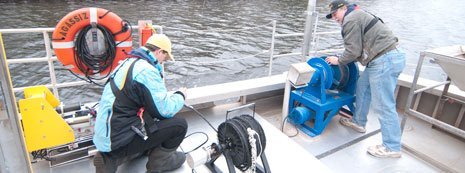Effect of key aggregate morphology and mold modulus on the spatial distribution of internal air voids in the compacted asphalt mixture
Publisher's version of record: https://doi.org/10.1520/JTE20180454
Abstract
Air voids in asphalt mixtures have a significant effect on the mechanical performance and functional characteristics of asphalt pavement. The reasonable spatial distribution of internal air voids is not only necessary to ensure the road performance of asphalt pavement in the field but also helps to enhance the determination accuracy of a performance parameter of an asphalt mixture specimen in the laboratory. To improve the influence of uneven spatial distribution of internal air voids on the structure strength of asphalt mixture, especially the determination involved in the mechanical parameters of an asphalt mixture specimen in the laboratory, four different asphalt mixtures were fabricated by a Superpave Gyratory Compactor to research two influential factors: the morphological features of key 4.75-mm-diameter aggregates and the compaction mold modulus. The Aggregate Image Measurement System was employed to analyze the morphological features of the 4.75-mm-diameter aggregate, and 1 rubber gasket was pasted on the mold bottom plate and base plate to change the compaction mold modulus. The spatial distribution of internal air voids in the asphalt mixture specimen was captured through mathematical analysis on X-ray computed tomography scanning images. The results showed that 4.75-mm aggregates with higher sphericity can produce a more homogeneous spatial distribution of air voids in the compacted asphalt mixture specimen. Along the axial direction, the internal porosities of sublayers in the asphalt mixture specimen fluctuated from 4.5 to 15.6 %. The internal porosity in the asphalt mixture specimen increased with a decrease in the compaction mold modulus because part of compaction energy was absorbed by the rubber gasket, while the spatial distribution of internal air voids in the specimen compacted by low modulus mold was more homogeneous than that by a higher modulus mold. This research indicated that the spatial distribution of internal air voids in an asphalt mixture specimen can be optimized further with some appropriate controlling methods.

